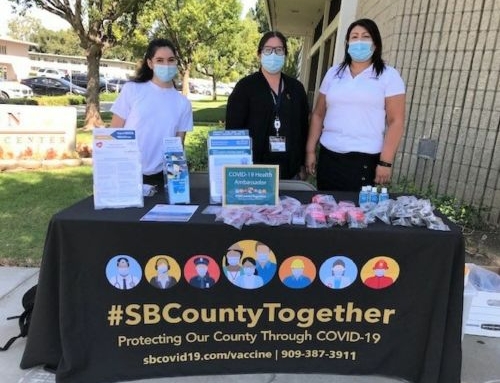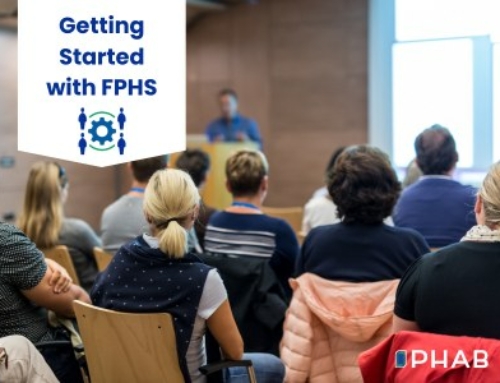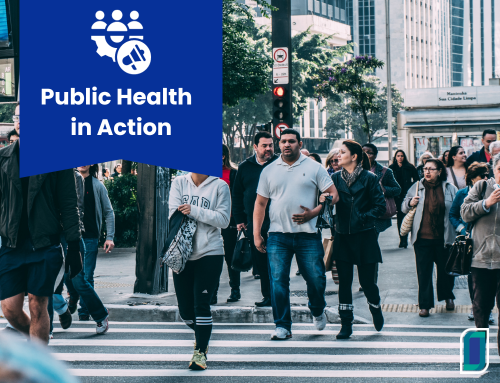PHNCI and the Center for Sharing Public Health Services (CSPHS) are supporting 10 collaborations’ implementation efforts of innovative multi-sector partnerships between governmental public health, healthcare, and social service organizations, along with the engagement of their communities, with the ultimate goal of aligning the three sectors’ work to improve population health, well-being, and equity for all. Collaboration and alignment efforts are underway while the grantees are in the throes of the COVID-19 pandemic and as they determine how best to work together, how their systems can and are supporting them, and how to continue to focus on equity.
From agencies offering mini-grants directly to community members with local ideas and solutions to improve mental well-being and housing stability to agencies stepping in to assist food banks and restaurants with meal delivery, cross-sector partnerships are especially important now, with many relying on each other to meet the needs of all communities impacted by the pandemic. This innovative story is shared in hope that others can learn from and possibly replicate those efforts.
Overview
In 2015, HIP-Cuyahoga selected structural racism as a priority for its work based on the impact of redlining on population health outcomes and the understanding of racism as the root cause of other priority issues that had been identified. Notably at this point, the group recognized that system, not program, changes are needed to dismantle structural racism and their focus shifted accordingly. Data on health and place, and the need for data that reflect systems change, became the underpinning of their work. Moreover, the group also realized they needed to look internally, into their own organizations, to understand structural racism and make changes within before turning outward for public engagement and systems change work. HIP-Cuyahoga members were at very different places in understanding racial justice and therefore training and organizational assessments were conducted for member organizations. Resulting changes included embedding principles of equity into contracts, hiring and other internal processes. The group also considered the importance of language, noting they could not address the goal of “racial equity” without articulating the underlying issues of “racism.”
Program Development
Outcomes
Additional outcomes include:
Equity Diversity and Inclusion (EDI) becomes a strategic priority
- CCBH is moving through a strategic planning process to include EDI as a priority, in the agencies current strategic plan. To date, the planning process has yielded an EDI philosophy and an overarching goal. Workgroups are developing objectives and activities for the focus areas including: 1) more diverse workforce; 2) business with more diverse vendors; 3) EDI informed work force; and 4) integration of EDI principles in agency policies, plans, and practices.
CCBH Continues to build internal capacity for EDI
- Sixteen members of CCBH’s Senior Leadership and Board attended a 2 day, in-depth, Racial Equity and Inclusion training presented by the Racial Equity Institute and hosted by HIP-Cuyahoga Anchor organization – Cleveland Neighborhood Progress.
Lessons Learned
Engage with your community’s history to understand the roots of inequities – Exploring Cuyahoga County’s long history of racial exclusion through housing policy helped HIP-Cuyahoga participants come together in understanding that structural racism is a foundational cause of health inequity. Rooting historical analysis into the context of your community’s reality helps make these issues more concrete and less abstract.
Develop a plan for financial sustainability – In addition to putting your efforts into building partnerships and a new narrative for health equity, make sure to also create a plan for financial resources and sustainability. Routinely revisit your financial status and outlook, and try to balance short-term and long-term funding for equity work.
Call to Action
Do you have an innovation story or COVID-19 innovation story or message to share? PHNCI would like to hear about your efforts! Specifically:
- We are looking for stories about health departments working innovatively with communities to address COVID-19.
- We are looking for messages that have worked for you about the role and value of public health and health departments now and into the future.
Complete this form to share a story and/or messages, including any applicable images and videos. Relevant stories will be posted to our website and shared through PHNCI communication mechanisms. Messages will be grouped together and shared as a crowd-sourced message map.





